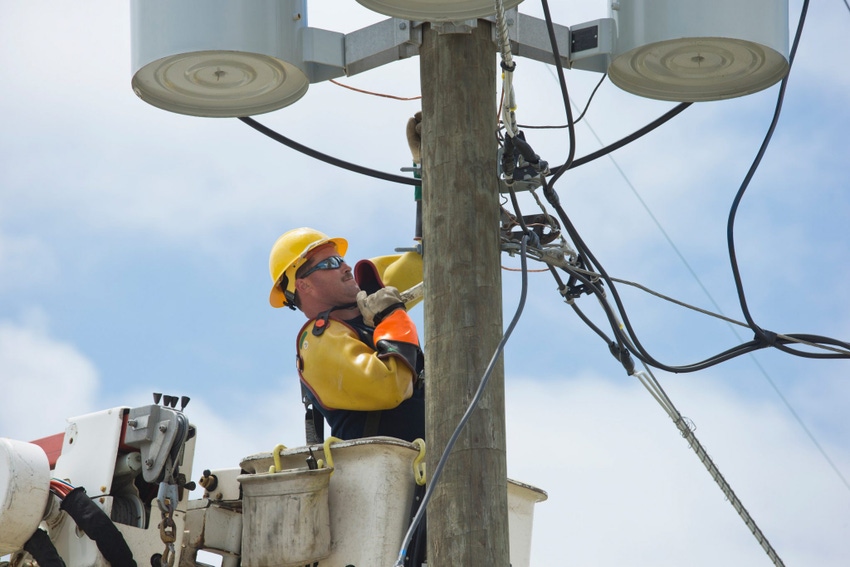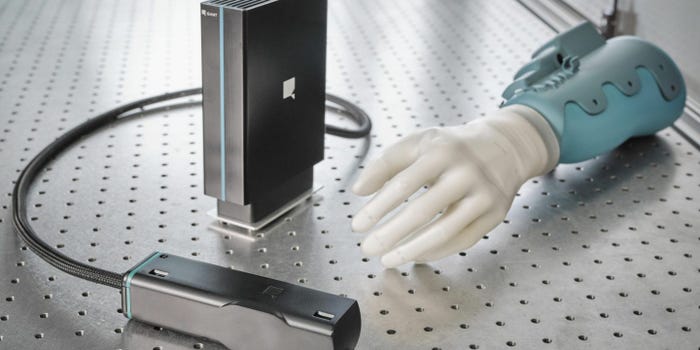December 27, 2016

Sponsored Content
Does your utility company concentrate on quality of service for delivery of electrical power? Is it dedicated to sharing conservation programs? Does your company use smart meters?
If you answered no to any of these questions, your utility company has probably not created a digital energy network.
Five technology trends are bringing many companies into the digital economy: Cyber security, cloud computing, supercomputing, hyperconnectivity, and a connected world that is also smarter. Utility companies are tapping these trends to mine data and improve their services and efficiency.
1. The benefits of mining Big Data
Utilities that have shifted to digital energy networks are satisfied with the results. One such company is Alliander N.V., a utility company in the Netherlands. Jeroen Scheer, the company’s manager, task force energy transition IT, pointed out that a real-time data collection and analysis program also benefits consumers: “What customers can do is really change their energy behavior – and you can reduce your energy bill by 10% or even 20% per month.”
Rob Jansen, manager, Grid Information, Alliander N.V., added, “Ever since we learned about the data mining approach to improve master-data quality proposed by SAP’s Data Science organization, it has become a substantial component of all our data quality projects.”
Data mining and energy utilities
Big Data is not always good data. Much of it is duplicated not relevant to your needs. Sorting through this much information is a time sink, but data mining software offers solutions. There are three legs to the data mining stool: tatistics, artificial intelligence, and machine learning. Machine learning involves the use of algorithms that learn from data in order to make predictions.
Data mining and analysis tools allow companies to sort out all the disordered and duplicate data, which enables utility companies to understand data relevance and use that material to forecast likely results. As data mining eliminates unneeded information, the rate of informed decision making is faster.
“The most dramatic change in the digital economy will be driven by hyperconnectivity and Big Data science. These will transform nearly every utility business model.” – SAP
Here are some ways that big data mining can help utilities:
Improve operational performance
Creating a digital energy network gives utility companies a new way of managing assets using the Internet of Things (IoT). In this new reality, transmission and other equipment is fitted with sensors that constantly monitors the equipment’s health. If the equipment goes offline, it will reach out to experts who maintain the system to create a recovery plan, and come up with temporary workarounds. A digital utility also can request and schedule repair services, as well as tap 3D-printed services for spare parts.
For a power grid that is more than 100 years old, this information could not be more welcome. Some utility experts believe that almost 60 percent of the nation’s electrical grid will need replacement in the next 20 years.
2. Asset management
Harnessing Big Data for asset management is one way that utilities improve operational performance. Operational analytics helps improve operations in a number of ways, including efficiency, economics, safety, and reliability. Using collected data, utilities improve their business in many ways, including integrating distributed energy sources and smart consumer meters into the traditional ways that utilities operated in the past.
Reducing overloads and managing related risks
New sources of energy (renewables) and increasing consumer demand creates challenges in maintaining the right load balance on the distribution grid. One important use of analytics is to identify causes of overloads and outages and eliminate them before they create problems with the electric grid.
Better operational control and added flexibility
Analyzing data from all parts of a utility enables a utility to have better operational control and more flexibility. Data supports many functions, especially by accurate load profiling and weather sensitivity, while at the same time optimizing grid/infrastructure capacity. Predictive analysis enables a utility to plan for future growth, while data analysis helps monitor the grid and safely run important jobs such as switching.
3. Improved performance of electric generation
This sounds straightforward, but is not. Efficient operation relies on optimized efficiency of producing electricity and lower fuel and maintenance expenses. Less-modern methods of condition-based monitoring, asset management systems, and plant efficiency modeling present only singular views of a problem since they were designed with a single purpose in mind: to exist in either operations or maintenance silos. Today’s analytics enables coordination of these two views into a more meaningful representation of plant and asset health.
Ron Grabyan, manager of Business Intelligence Services, Southern California Edison, says this about analytics as it relates to stockholders: “SAP HANA is a game-changer for Southern California Edison. It allows us to be more agile and solve problems for our analysts.”
Another company that is utilizing analytics is MVV Energie. Sales manager Bernhard Schumacher said, “We want to grow by 10% year-over-year. This is what we expect on the revenue side as a key benefit of our project to run SAP CRM powered by SAP HANA. We think we can sell better now that our sales representatives can show energy-service scenarios using actual, real-time data on their mobile devices rather than relying on PowerPoint presentations.”
4. Transformation of the customer experience
Bad debt
It is common for utility companies to write off millions in bad debt each year from customers who do not pay their utility bills. Unfortunately, either the utility’s customers or stockholders pay for this bad debt. This places utilities under pressure from regulators and shareholders to cut these losses while continuing to allow consumers unlikely to pay to get electricity. Shareholders want the losses cut as it is a high and non-productive cost to the company, regulators want the losses cut as a matter social policy – electricity is a basic necessity and borders on a right.
Smart meters
Many utility companies use smart meters, electronic devices that record electricity use at time lapses of 60 minutes or less and regularly send that information back to the utility for billing reasons. These intelligent meters offer two-way messaging between the meter and the utility’s central system.
As useful data becomes more common, utilities will find even more ways to utilize data in building a smarter, customer-centric, shareholder-pleasing electric utility.
5. Transformation of the utility network
Ericson Communications notes that several things are needed to transform the electric utility industry, including resource trading on wholesale markets, sustainability and lowering of carbon footprints, availability and security of the electricity grid, and market liberalization and competition. Here again, smart meter technology comes into play. As smart meters are deployed to more and more customers, the number of connections made to the meter management platform and the amount of data collected explodes to at least 100 times more than at present.
Grid operators find this information valuable. They use data from the smart meter that gives information about grid faults to implement cost-effective and efficient local energy efficiencies, and they use meter and grid data to create more efficient market mechanisms at the wholesale and local markets.
Learn more about digital transformation for utilities: Utilities: Reimagined for the new economy.
You May Also Like


.png?width=700&auto=webp&quality=80&disable=upscale)
.png?width=300&auto=webp&quality=80&disable=upscale)


.png?width=300&auto=webp&quality=80&disable=upscale)